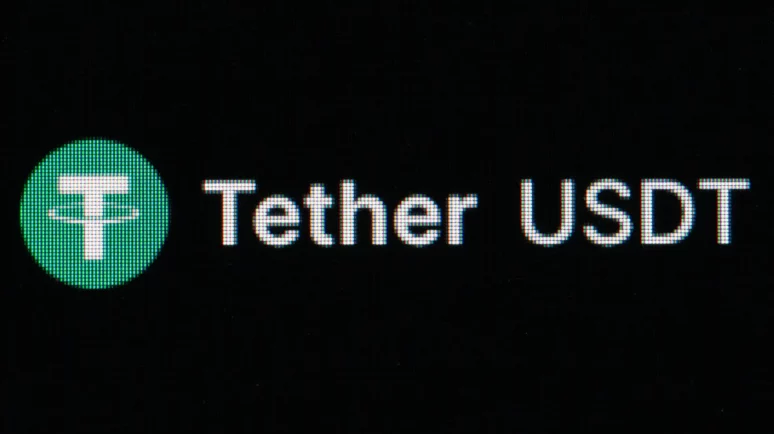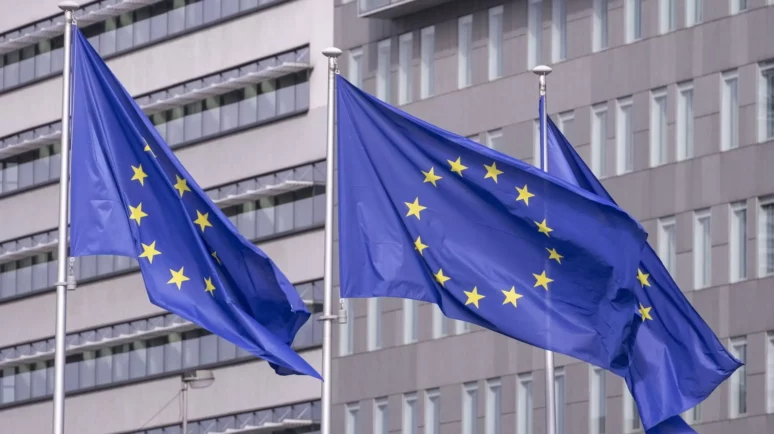Regulatory Rift: EU’s MiCA Framework Positions It Ahead of Uncertain Crypto Rules in US

MiCA to Bring Crypto Rules Clarity | Image: EU Vs US Crypto Rules Umit Turhan Coskun-NurPhoto/Getty Images
Key Takeaways
- MiCA Regulation positions the EU ahead of the US in providing a clear regulatory environment.
- Crypto player says that the MiCA framework adopts a balanced approach between innovation and consumer protection.
- Uncertainty in the US regulatory framework has led to cautious behavior among cryptocurrency wallet providers.
The summer of 2024 will see the European Union implementing key provisions of the Markets in Crypto-Assets (MiCA) Regulation.
While the move is a broader commitment to establishing a clear, unified regulatory framework for digital assets across EU member states, we wanted to under what the players think about it at the ground level.
CCN spoke to Tom Kiddle, co-founder of Palisade: a French-regulated digital asset service provider based in London, Kiddle highlighted several critical aspects of MiCA and its implications for the crypto industry.
MiCA Places EU Ahead of the US
Kiddle told CCN that the European Union, with its Markets in Crypto-Assets (MiCA) Regulation, provides a more attractive environment for crypto custody providers compared to the United States.
He said, “So far, the US has done little to advance a clear crypto regulatory framework. Instead, with an approach centered on regulation by enforcement, regulators, and courts often decide the rules on-the-go.”
Kiddle explains that under MiCA, there are specific guidelines for licensing, capital requirements, and consumer protection. He believes it offers a clear compliance framework for crypto businesses.
Kiddle said, “It also creates a single rulebook across all EU member states and once a business is licensed in one EU nation, it can offer services throughout the bloc.”
The co-founder endorses the framework where once a company obtains a license in one EU member state, it can operate across the entire EU bloc. He believes it simplifies business operations significantly compared to the U.S., where separate licensing may be needed in each state.
An analysis by EY explains that MiCA will first apply to Asset-Referenced Tokens (ARTs) and Electronic Money Tokens (EMTs). The process will integrate crypto-assets into mainstream financial services in June 2024.
While ARTs are akin to stablecoins, EMTs function similarly to digital fiat currencies. According to EY, the regulation necessitates operational adjustments to incorporate ARTs and EMTs, which may involve developing new financial products, and services, and ensuring compliance with MiCA’s regulatory framework.
Meanwhile, Kiddle is impressed by MiCA’s “welcome and balanced approach between innovation and consumer protection.”
The co-founder highlighted two key aspects of the framework: The classification of crypto assets and custody requirements.
“Firstly, it doesn’t treat all crypto-assets the same. It categorizes them based on risk, allowing for a lighter touch for less risky assets while ensuring stricter oversight for those with greater potential for harm,” Kiddle explained.
Further adding that the framework enforces strict licensing, supervision, and disclosure requirements for crypto custody providers. Kiddle explains, “Custody providers must have the necessary capital, expertise, and controls to safeguard consumer assets. This enables the development of innovative applications while protecting consumers.”
Can Uncertainty in the US Spillover?
Cryptocurrency wallet services, including Wasabi Wallet by zkSNACKs and Phoenix Wallet by ACINQ, recently ceased operations for American customers.
The move is expected to have broader enforcement actions after the arrest of the co-founders of Samourai Wallet on charges of money laundering and operating without a license.
According to Kiddle, “Wallet providers are naturally cautious about operating in the United States.”
Palisade co-founder believes that the fear stems from the ambiguity in regulatory guidelines, which raises the risk of unexpected enforcement actions.
“On the other hand, the rules are clear and easy to abide by under the EU’s MiCA regime,” Kiddle adds.
Kiddle anticipates that the upcoming regulatory frameworks will provide clearer classifications of crypto assets and activities.
He explained, “We can expect even clearer classifications of crypto assets and activities as some of the frameworks being developed over the past years come into force.”
“There will likely be more cross-jurisdictional cooperation, with bodies like FATF working to set global standards,” Kiddle added.
For instance, take a look at the G20 Summit 2023, which was chaired by India. All major global financial organizations—the IMF, FSB, and FATF—collaborated on the progress made in applying the strategic plan for the regulation and management of cryptocurrency assets.
Kiddle notes, “I hope we see stronger protection measures for consumers regarding the segregation of duties/assets on platforms like exchanges, with clearer guidelines around digital asset custody that look like what we have in TradFi today.”
Kiddle describes an optimal regulatory environment for cryptocurrencies and digital assets is where the regulatory bodies are proactive rather than merely responding to issues as they arise.
“In this scenario, regulators are keen and open to engage with industry participants to understand the technology, use-cases and their impacts,” the executive explains.
Challenges in MiCA
Kiddle believes that MiCA offers significant advantages for crypto businesses through clarity which is essential for companies looking to innovate. Another reason that the executive notes is why crypto businesses are considering relocating from the US to the EU.
However, despite the planned implementation of the MiCA framework, the co-founder raises some issues.
He said, “Despite its merits, some challenges exist under MiCA. Strict licensing requirements and ongoing reporting obligations can be draining for smaller companies, but at the same time, this is also needed to protect consumers.”
“It will also be essential that MiCA is regularly and quickly updated to keep pace with continuous innovation, which could be tricky. Technology tends to move quicker than regulation.”
With what is going on in the US, Kiddle emphasized the importance of understanding and navigating the regulatory environment for businesses.
He explains, “A lack of licenses or clear path to obtaining regulatory approval can make or break a product line. It is essential to understand the regulatory landscape of the jurisdiction you intend to operate in and for the use-case you are building. Not having a clear idea of this upfront can be the difference between success and failure.”
As per Kiddle, “Engaging in regular audits by third-party firms can also ensure that crypto custody provider’s operations comply with the latest regulatory standards without overstepping into unnecessary data collection.”
Kiddle also points out the importance of transparency in how businesses handle user data. He believes in clearly informing users about the usage and protection of their data to enhance trust.
Crypto Framework Forward
The implementation of the MiCA Regulation in the EU is a step forward in establishing a cohesive regulatory framework for digital assets.As the region is now positioned as a favorable destination for crypto businesses, the US could be lagging.
The contrast between the EU’s proactive approach and the US’s regulatory uncertainty underlines the importance of regulatory clarity in fostering innovation while ensuring consumer protection.


